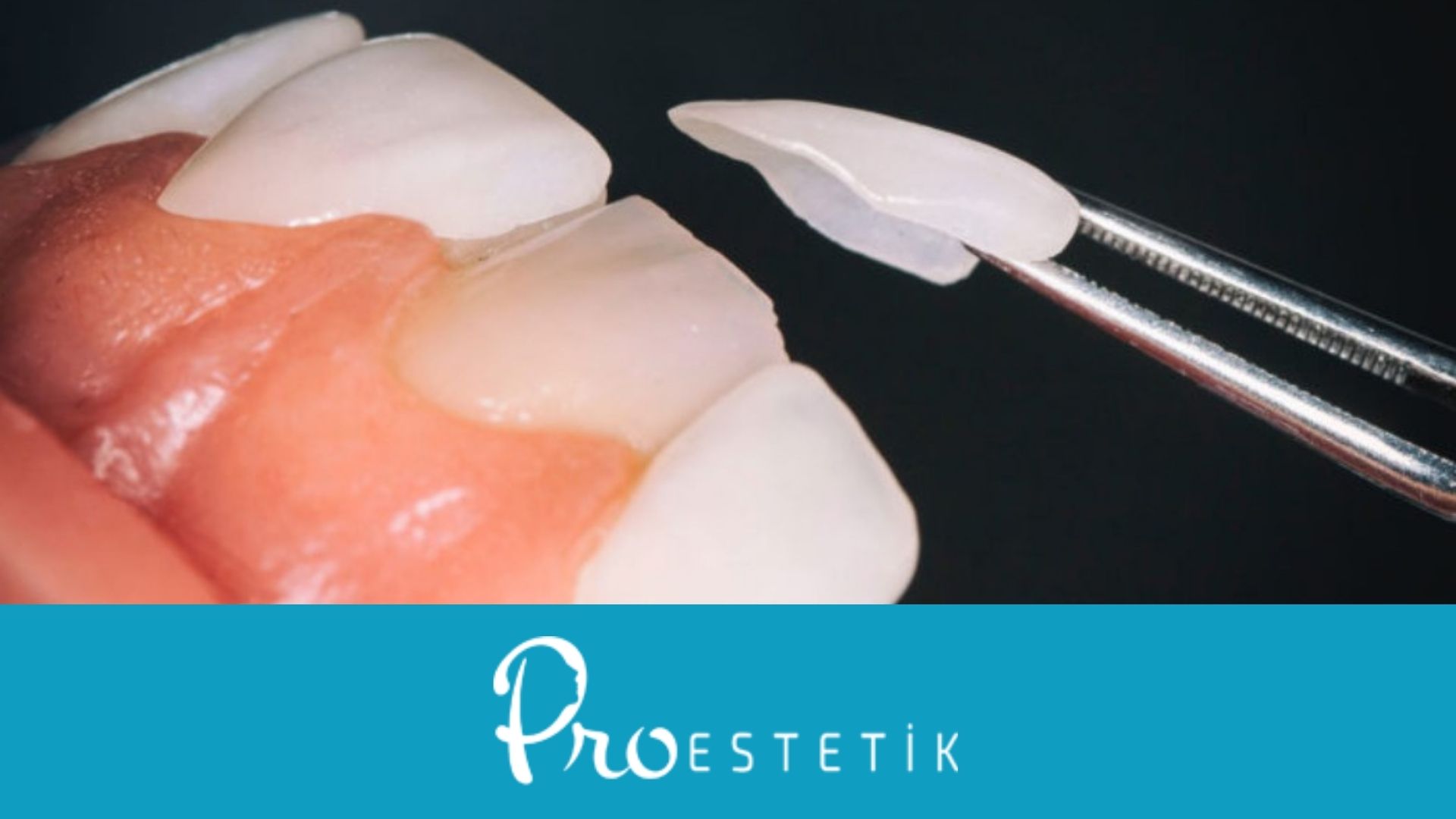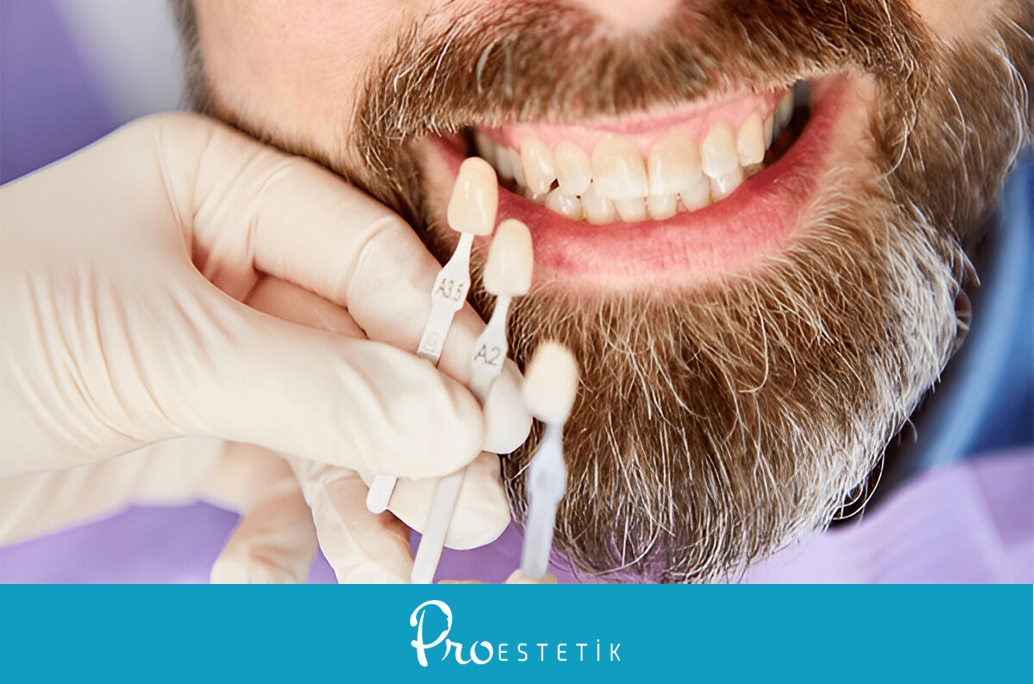When the pulp inside our tooth, known as the pulpa, is damaged, bacteria begin to multiply. Thanks to modern technology, when the pulpa is damaged, rather than extracting the tooth directly, it can be saved through root canal treatment.
Root Canal Treatment Prices 2024

The prices for 2024 root canal treatment, as determined by the Turkish Dental Association, are as follows:
- Single Canal (Excluding Filling): 63 £
- Two Canals (Excluding Filling): 95 £
- Three Canals (Excluding Filling): 130 £
- Root Canal Treatment - Additional for Each Canal: 35 £
- Root Canal Treatment for Periapical Lesion - Single Canal (Excluding Filling): 66 £
- Root Canal Treatment for Periapical Lesion - Two Canals (Excluding Filling): 98 £
- Root Canal Treatment for Periapical Lesion - Three Canals (Excluding Filling): 135 £
- Retreatment - Canal Filling Repeated (Excluding Filling for Each Canal): 60 £
- Ready Post Application Inside the Canal (Metal) (Excluding Filling Fee): 41 £
- Fiber Post Application Inside the Canal (Excluding Filling Fee): 82 £
- Removal of Material Broken from the Canal: 84 £
Root Canal Treatment - What Is It?
Inside our tooth is a tissue called the pulp, surrounded by blood vessels and nerves. If the pulp is damaged, bacteria in the area begin to multiply rapidly. These bacterias cause cavities, dental abscesses, or infections in the future. Thanks to today's technology, when the pulp is damaged, the tooth can be saved instead of pulling it directly with root canal treatment.
Even though the pulp and the nerves are removed in root canal treatment, the tooth continues to function properly. After the removal of the dental nerve, the patient gets rid of toothache.
What Is Root Canal Treatment?
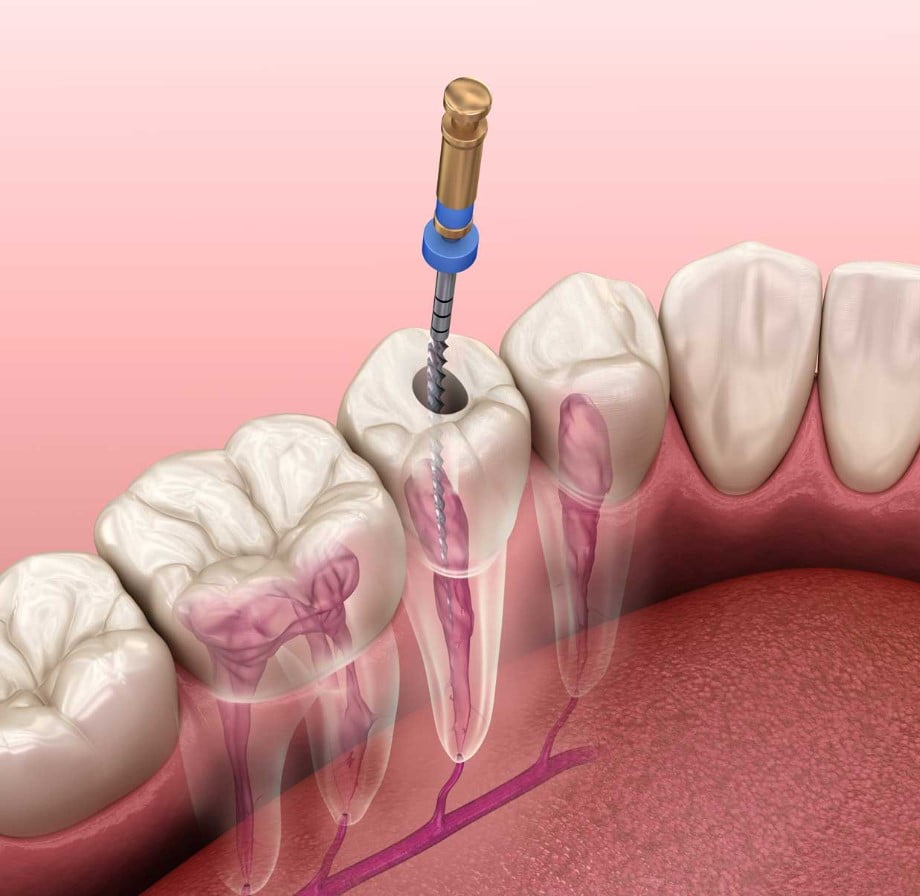
What is root canal treatment? Root canal treatment, medically known as endodontic treatment, is a treatment applied to save a person's decayed or infected tooth. Inside the tooth is a living tissue called the pulp. This tissue contains blood vessels and nerves that feed the tooth. The pulp can become damaged or infected for various reasons. After that, the patient might need root canal treatment.
In root canal treatment, the pulp is removed and the area is cleaned and filled. The is applied in cases where the damaged tooth cannot be repaired with dental filling treatment.
In Which Cases Is Root Canal Treatment Performed?
First of all, it should be noted that root canal treatment is not applied for every decayed tooth. Filling treatment can be applied to decayed teeth that only do not cause too much pain. If treatment is not started before the condition of the tooth worsens, then we need root canal treatment.
Root canal treatment can be applied for many different reasons. However, decays and fractures in the tooth are at the top of the list of situations where treatment is needed. If these deteriorations are not handled within a short period of time, the tissue of the tooth begins to deteriorate. This leads to tooth and bone loss.
Thanks to root canal treatment, the bone structure of the tooth is not lost and the dead tooth can be saved. Below, you can check out the cases where the root canal treatment is applied;
- Decayed tooth
- Infected tooth
- Fractures and cracks in the tooth
- Gum swelling
- Pain during chewing
- Tooth discoloration
- Tooth sensitivity
If you are looking for a smile makeover, check out our services Hollywood Smile.
How Is Root Canal Treatment Done?
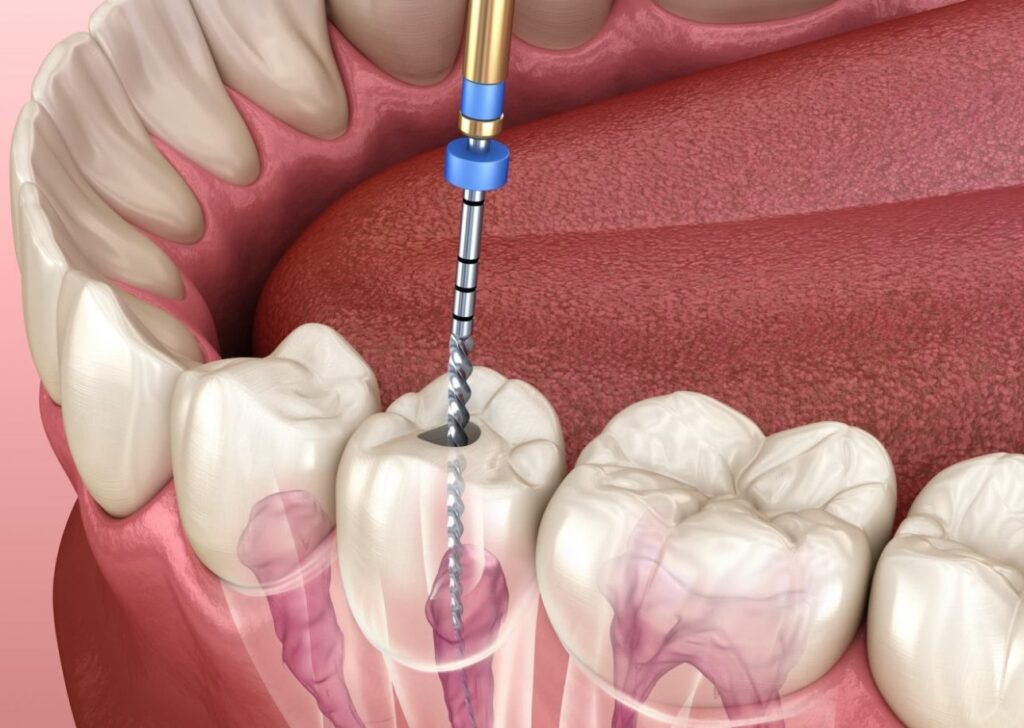
Root canal treatments are performed by a dentist or endodontist. They can be completed in 1 or 2 sessions depending on the condition of the tooth. In these sessions, tooth decay is removed and the tooth canals are reshaped and filled afterward. Although the process of root canal treatment varies according to the damage to the tooth, it is generally as follows;
- In the first step of root canal treatment, the patient is asked to have an X-ray. The reason for this is to see if there is any inflammation in the tooth roots. In this way, the dentist can examine the tooth in more detail and creates a treatment plan accordingly. If the damage to the pulp is too great, root canal treatment is started.
- First, the tissues around the tooth to be treated are numbed with local anesthesia. This procedure ensures that the treatment will be painless for the patient.
- After anesthesia, the threading process begins. In this part, the dentist reaches the pulp area by drilling a hole in the tooth.
- At this point, the pulp removal process begins. The living tissue of the tooth called pulp is removed and the root canals are cleaned with special tools. After that, the root canals are reshaped and infections and decay inside the tooth are cleaned and other damages, if there are any, are removed.
- The cleaned canals are filled with a special filling material. This filling prevents the tooth from becoming infected again.
- After the filling of the canal, the treatment is completed.
One procedure in root canal treatment takes approximately 1 hour. In some cases, the dentist may prefer to complete the treatment in two sessions. After the pulp is removed, the waiting time for the filling process usually does not exceed 1 week.
We suggest you read: What Causes Dental Calculus?
Things to Consider After Root Canal Treatment
There are some points that patients should pay attention to after root canal treatment;
- Root canal treatment is usually completed in two sessions. For this reason, take care not to use the tooth on which root canal treatment is started between sessions.
- Do not eat or drink anything for 3 hours after the treatment is completed.
- Pain and tooth sensitivity may be observed after root canal treatment. Avoid consuming very cold and hot things for a few days. Take the medication regularly prescribed by your dentist.
- Avoid consuming sugary foods known to cause tooth decay.
- Do not neglect your daily teeth cleaning. Brush your teeth at least 2 times a day with a soft toothbrush. Then complete the cleaning with dental floss.
- Do not forget to visit your dentist regularly.
Symptoms of a Failed Root Canal Treatment
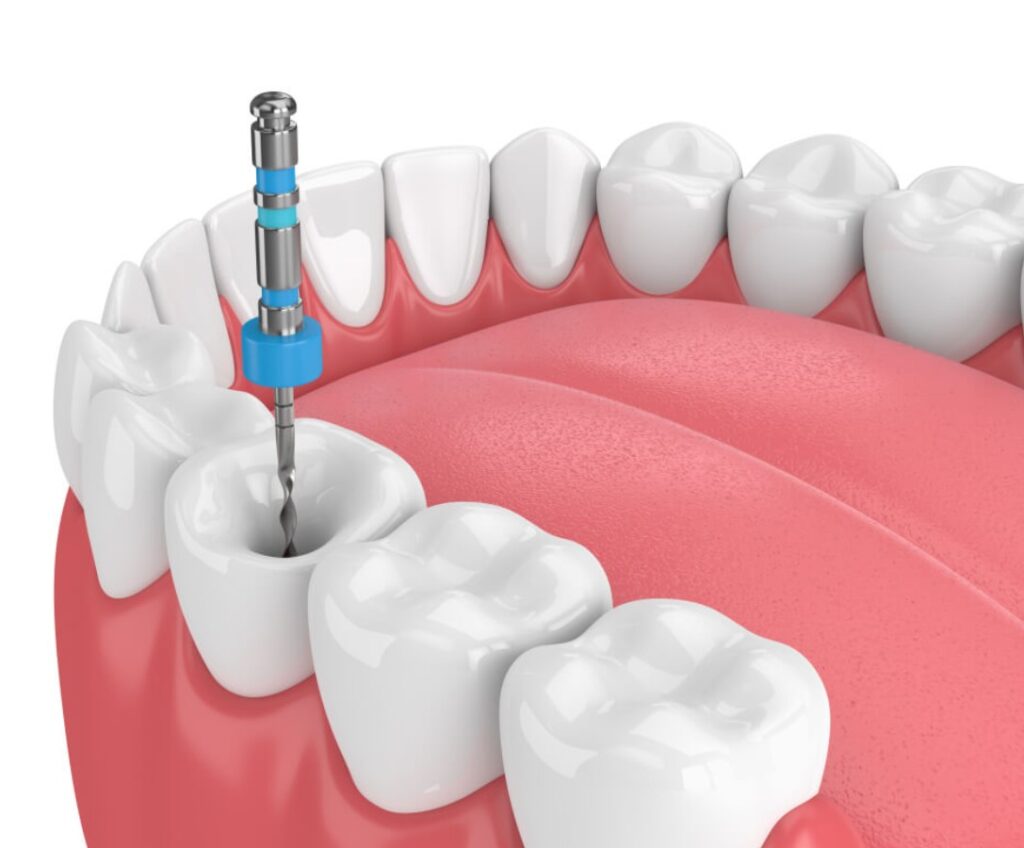
Root canal treatments sometimes do not provide definitive solutions. Unsuccessful treatments may cause the patient to feel pain again. Although it varies from patient to patient, the symptoms of failed root canal treatment are as follows;
- Swelling in the mouth, teeth and face
- Prolonged sensitivity to cold and hot foods
- Swelling and inflammation of the gums
- Tooth discoloration
- Headaches due to increased sinus problems
How long does a root canal take?
The duration of root canal treatment varies from patient to patient. The treatment can be completed in a single session or in two sessions. Each session takes an average of 1 hour.
Does root canal treatment hurt?
The tooth area where the root canal treatment will be applied is numbed with local anesthesia. Therefore, the patient does not feel pain during the application.
What causes throbbing after root canal treatment?
Some complications may develop after root canal treatment. When bacteria are not completely removed during treatment, the patient may feel throbbing pain.
Can I eat after root canal treatment?
It is best to wait for the anesthesia to wear off before eating after root canal treatment. Otherwise, you may involuntarily bite your lips and the inside of your mouth. For this reason, it is recommended to eat 3 hours after root canal treatment.

 English
English Turkish
Turkish Deutsch
Deutsch العربية
العربية![[:en]Everything About Root Canal Treatment | Updated Prices 2024[:tr]Kanal Tedavisi Fiyatları 2024 | Tedavi Hakkındaki Her Şey![:de]Alles über die Wurzelkanalbehandlung | Aktuelle Preise 2024[:ar]كل شيء حول علاج قناة الجذر | الأسعار الحالية 2024[:] kanal tedavisi nedir](https://proestetik.com.tr/wp-content/uploads/2023/04/kanal-tedavisi-nedir.jpg)



